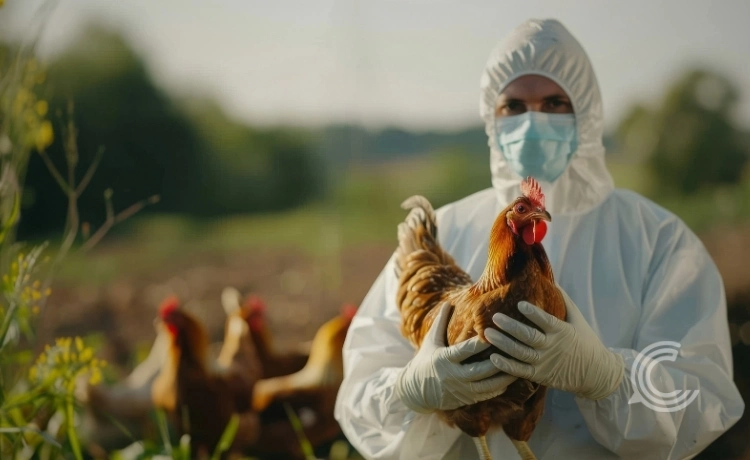Early Bird Flu Wave Sweeps Across Europe, North America

Key Highlights
- Europe and North America are experiencing an unusually early surge in bird flu cases.
- Health agencies link the spike to shifting migration patterns and the wider spread of the virus.
- Fears rise over culling, supply-chain strains and food price pressure.
An unusually early and intense wave of bird flu is sweeping across Europe and North America, raising fears of a repeat of past crises that have triggered mass culling, disrupted food supply chains and fuelled price spikes.
According to Reuters, health agencies across both regions are reporting a sharp rise in highly pathogenic avian influenza cases, not only in poultry farms but also among a broader range of wild birds.
Early Bird Flu Wave Sweeps Europe and North America as Cases Surge Ahead of Season
The virus, commonly known as bird flu, has been responsible for the culling of hundreds of millions of birds in recent years, causing billions in economic damage. Human infections remain rare, but the scale and timing of the current outbreak are unsettling regulators who say the virus appears to be circulating earlier and more widely.
A Surge Arriving Too Early
Typically, bird flu spikes in autumn as migratory birds begin their southbound journeys. But this year, cases surfaced weeks ahead of usual patterns. Both Europe and the United States are reporting earlier detections, which experts say may reflect changes in migration timing or shifts in the species now acting as primary carriers.
The US is seeing some of the sharpest increases. As reported by Reuters, 107 outbreaks were confirmed by November 18, nearly four times the number recorded during the same period last year. Minnesota, America’s top turkey-producing state, detected its first case two months earlier than in 2022.
Tim Boring, director of Michigan’s Department of Agriculture and Rural Development, told Reuters the surge is part of a “pattern” indicating the multi-year outbreak that is far from over. Since September, the United States has already culled around 8 million birds, slightly higher than last year’s toll.
Canada, too, has culled nearly 8 million birds. Agriculture Minister Heath MacDonald described the situation as “very worrisome,” saying wild birds appear to be carrying the virus more aggressively this season.
Europe Faces Its Own Escalation
Europe is experiencing an equally troubling rise. According to the European Food Safety Agency (EFSA), 1,443 cases were detected in wild birds across 26 European countries between early September and mid-November, a fourfold increase from the same period last year and the highest since 2016.
Germany has recorded its worst outbreak in three years, while France has placed its poultry sector on high alert much earlier than usual.
The French health security agency ANSES stated the virus is affecting various wild bird species this year. Gilles Salvat, Deputy Director General at ANSES, noted that common cranes, early migrators, appear to be a major driver of the early spread. These cranes have carried the virus from northeast to southwest Europe, triggering high fatalities in Germany and France and now spilling into farmed bird populations.
Asia Sees Mixed Trends
While most of Asia has remained relatively stable, Cambodia continues to battle severe outbreaks, and Japan reported its first case slightly later than last year. Japan has already culled 1.65 million birds, indicating that the virus remains a persistent threat even outside Europe and North America.
Health Agencies Urge Caution, Not Panic
The World Organisation for Animal Health (WOAH) said the situation is “concerning but not alarming.” WOAH’s head of science, Gregorio Torres, told Reuters that the focus should remain on monitoring the virus itself, as multiple factors, including climate shifts and changes in migratory routes, could explain the early surge.
For now, governments across Europe and North America are adopting tighter surveillance measures, urging poultry farmers to enhance biosecurity, and preparing for potential economic fallout if the outbreak intensifies over the winter.



